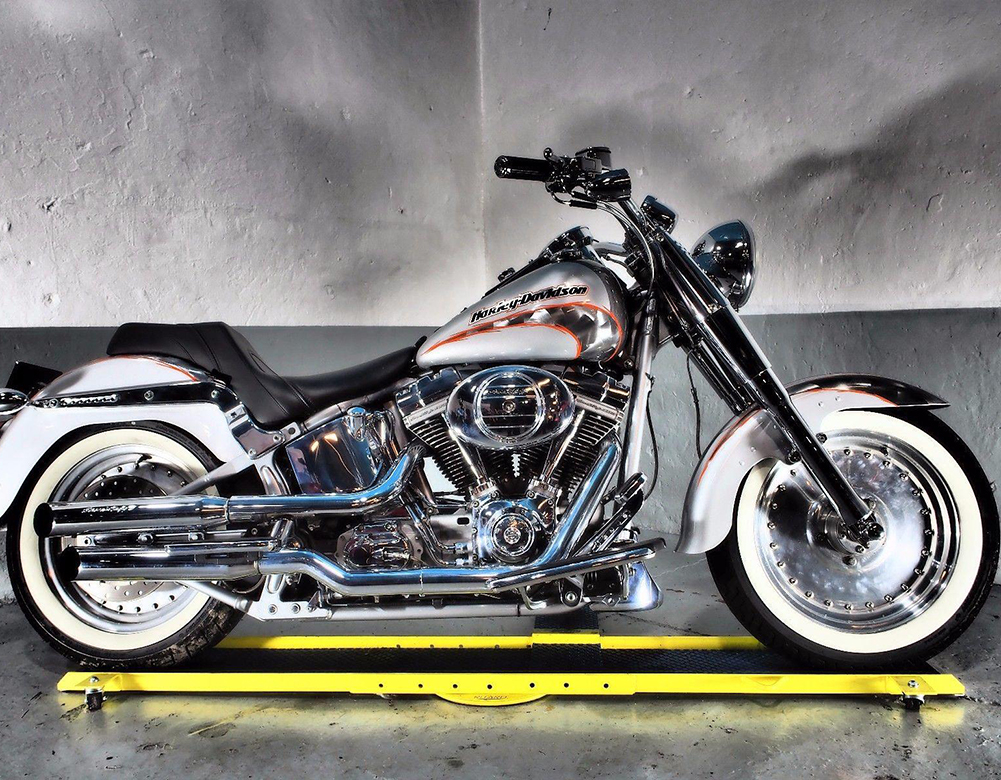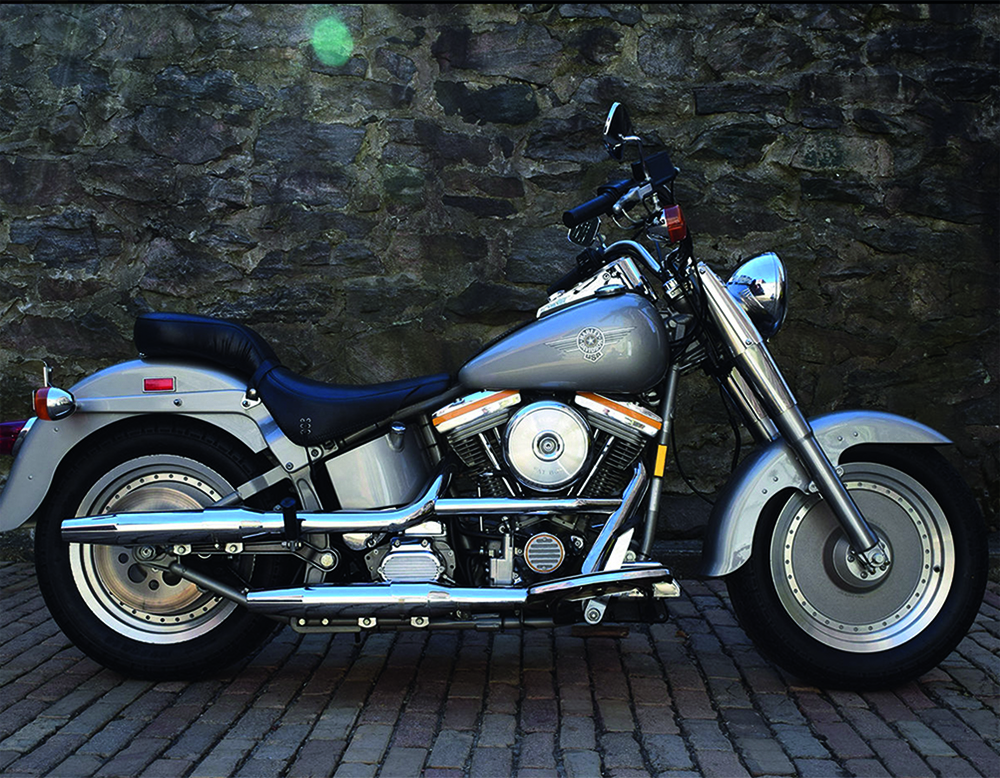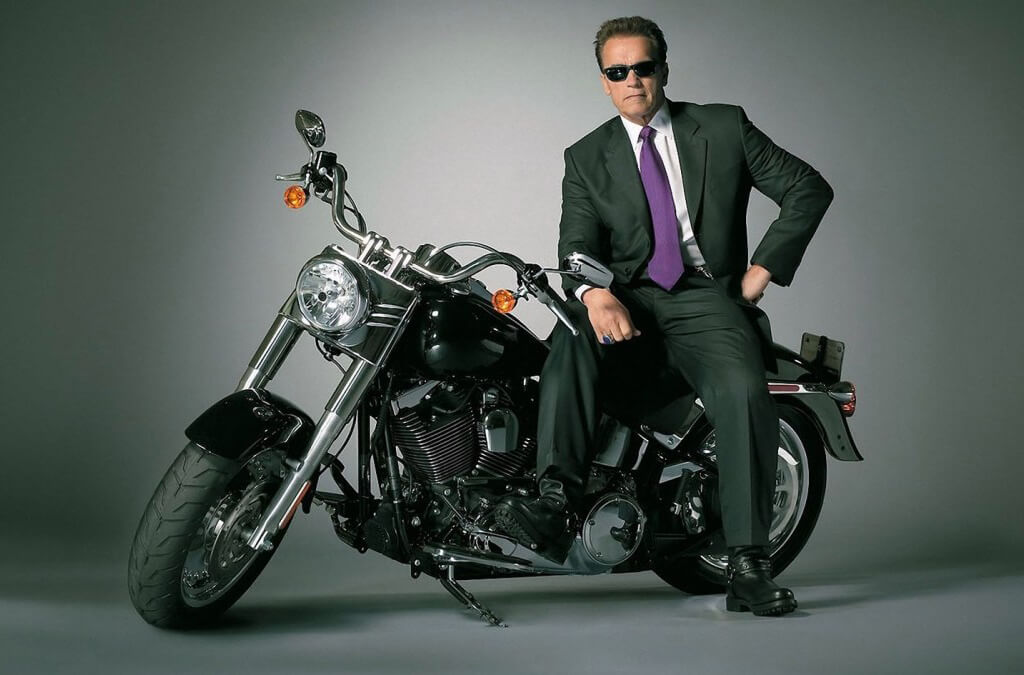Release of Fat Boy Motorbike
Back in 1984 Harley-Davidson released the FXST Softail, which at its heart was an Evolution 80ci motor in a revolutionary new frame.
It mimicked the look of a hardtail frame with shocks underneath the gearbox.
Two years later the FLST Heritage Softail was released and out of this bike came the very first and iconic Fat Boy.

The Fat Boy Motorbike With Amazing features
The Softail may have been a big hit, but it was nothing compared to the enthusiasm the Fat Boy (FLSTF) was met with when it was released in 1990.
Designed by Willie G and Louie Netz using elements of the Heritage, such as the front end and the rear guard.
The Fat-Boy had a shortened front guard and to really make it stand out it featured solid disc wheels front and rear.
The engine also received some highlights with a yellow stripe on the middle section of the three-piece rocker box.
The exhaust system was the first time a ‘shotgun exhaust’ had been fitted to a Harley-Davidson.

Speculations Concerning The Name And Logo Of This Amazing Motorcycle
The classic Fat Boy logo was designed by Willie G to instil the feeling of patriotism in the riding public, and is still the most recognised H-D logo today, apart from the bar and shield of course.
Rumours surfaced that it was actually based on the look of the US Air Force wings harking back to the bombing of Nagasaki and Hiroshima.
Many people also wondered how the Fat Boy came to get its name.
The term was actually given to the bike because of Willie’s interpretation of its massive size.
It’s also suggested that it’s a name that links the bike back to the Fat Bob model that was manufactured earlier with similar DNA.
Then of course there are the rumours that it took its name from the US bombs used in WWII, with the first part ‘Fat’ coming from the Fat Man and ‘Boy’ from the Little Boy.
The mentality behind this is that it would be the bike that would rock the Japanese bike industry, just as the bombs had done in 1945.
The 1990 Fat Boy was only available in Silver which only added fuel to the bomb rumours, as it would be a similar colour to that of the B29.

Fat Boy Motorcycle Earned It’s Popularity
It took Willie G and Louie a couple of years of fine tuning before they felt confident enough to release it to the public.
It included Willie G riding a prototype to Daytona in both 1988 and 1989 before it was released as a production model in 1990.
Its popularity increased even more when it was used by Arnold Schwarzenegger in the Hollywood blockbuster Terminator 2.
It also soon became the highest selling model in Australia that Harley-Davidson produced.
It notched up a few more television appearances along the way in Terminator Genisys, Wild Hogs, CSI Miami and of course more recently on Sons of Anarchy.

Motorbike That Never Lost Its Shine
When the Twin Cam 88B motor in a redesigned Softail frame was released, the Fat Boy was still in the lineup.
Although in 2007 it underwent a few changes with the wheels getting some bullet holes around the outside edge of the disc and to follow the big wheel trend of the time, the back wheel increased in size from 150mm to 200mm.
They also released a 15th Anniversary model in 2005 with a Screamin’ Eagle power plant along with custom wheels and paint.
Today the Fat Boy looks quite different again after being released in the redesigned Softail frame in 2018.
It included the new Milwaukee Eight counterbalanced motor and Showa suspension front and rear, with the former twin shocks being replaced with a new mono-shock fitted under the seat.
It does still feature its shotgun exhaust and the iconic disc wheels, which have also undergone a major transformation as has the headlight nacelle.
But no matter which angle you look from, it’s still unmistakably a Fat Boy.
And now thirty years later, H-D have released the 30th Anniversary Edition in a production run of only 2,500 motorcycles.
So if you’re a keen fan, we suggest you move quickly if you’re hoping to roll one of these into your garage.
Check out our LiveToRide magazines for more exciting information and keep your passion for riding alive always.
Read our LiveToRide publications for more great information and keep your riding passion alive.















